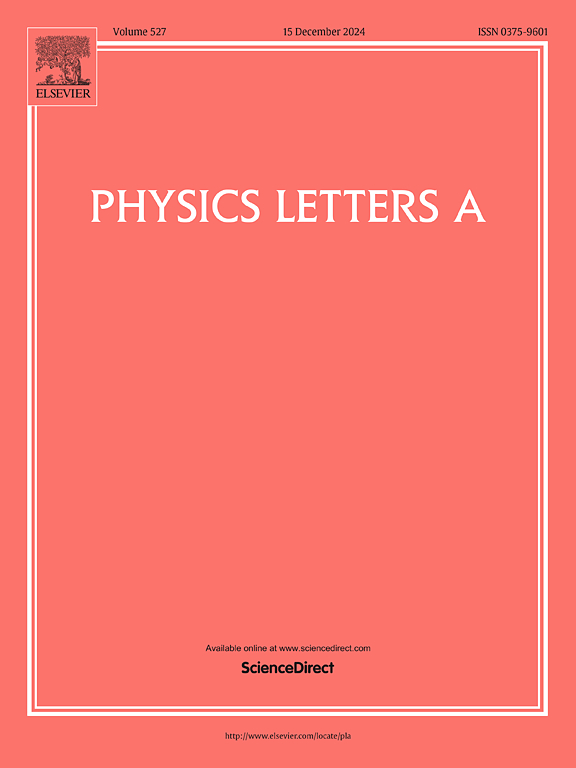The synergistic effect of neutron irradiation on the tensile properties of Fe-0.74 wt.% Ni alloy: A combined study of machine-learning and molecular dynamics
IF 2.3
3区 物理与天体物理
Q2 PHYSICS, MULTIDISCIPLINARY
引用次数: 0
Abstract
The aim of this study is to elucidate the mechanisms of irradiation damage to reactor pressure vessel (RPV) steel using a machine learning algorithms and high-throughput calculations. Various Fe-Ni alloy structures were generated based on structural enumeration for high-throughput first-principles calculations, with the Fe-Ni interatomic potential trained using a Gaussian approximation function. Simulations were conducted using LAMMPS software to investigate the effects of neutron irradiation on the tensile properties of Fe-0.74 wt.% Ni alloy, utilizing the well-established Fe-Ni interatomic potential. The irradiation dose significantly impacts defects in the Fe-Ni alloy. Synergistic effects of alloy solute element content and temperature with irradiation defects reveal that defect numbers at irradiation points increase linearly with MD-dpa and PKA energy. During irradiation, Ni atoms diffuse via the exchange with vacancy, synergizing with other Ni elements. Notably, Ni content inversely affects yield stress, resulting in lower yield stress in irradiated materials compared to pre-irradiation levels. While temperature inversely affects yield stress, its synergistic effect with defects increases yield stresses post-irradiation, known as irradiation hardening. Post-irradiation, the yield strain increases, and a flat plateau stress region is observed in Fe-Ni alloys. Ni atoms act as a buffer during the stretching process, contributing to a relatively gentle slope stress region despite increasing stress. The distribution of Ni atoms significantly influences the stress-strain curve, in which the aggregated Ni atoms decrease yield strength, whereas uniform distribution increases it, highlighting Ni atoms as buffering role during stretching process. These simulations yield valuable insights for exploring scalability and enhancing the development of irradiation hardening and embrittlement models.
中子辐照对 Fe-0.74 wt.% Ni 合金拉伸性能的协同效应:机器学习与分子动力学的结合研究
本研究旨在利用机器学习算法和高通量计算,阐明反应堆压力容器(RPV)钢辐照损伤的机理。在结构枚举的基础上生成了各种铁-镍合金结构,用于高通量第一原理计算,并使用高斯近似函数训练了铁-镍原子间势。利用 LAMMPS 软件进行了模拟,研究了中子辐照对 Fe-0.74 wt.% Ni 合金拉伸性能的影响,并使用了成熟的 Fe-Ni 原子间势。辐照剂量对 Fe-Ni 合金中的缺陷有很大影响。合金溶质元素含量和温度与辐照缺陷的协同效应表明,辐照点的缺陷数量随 MD-dpa 和 PKA 能量的增加而线性增加。在辐照过程中,镍原子通过与空位交换扩散,与其他镍元素协同作用。值得注意的是,镍含量与屈服应力成反比,导致辐照材料的屈服应力低于辐照前的水平。虽然温度对屈服应力有反向影响,但它与缺陷的协同作用会增加辐照后的屈服应力,即所谓的辐照硬化。辐照后,屈服应力增加,在铁镍合金中观察到平坦的高原应力区。在拉伸过程中,镍原子起着缓冲作用,尽管应力不断增加,但却形成了一个相对平缓的斜坡应力区。镍原子的分布对应力-应变曲线有很大影响,其中聚集的镍原子会降低屈服强度,而均匀分布的镍原子则会提高屈服强度,这突出表明了镍原子在拉伸过程中的缓冲作用。这些模拟为探索可扩展性和加强辐照硬化与脆化模型的开发提供了宝贵的见解。
本文章由计算机程序翻译,如有差异,请以英文原文为准。
求助全文
约1分钟内获得全文
求助全文
来源期刊

Physics Letters A
物理-物理:综合
CiteScore
5.10
自引率
3.80%
发文量
493
审稿时长
30 days
期刊介绍:
Physics Letters A offers an exciting publication outlet for novel and frontier physics. It encourages the submission of new research on: condensed matter physics, theoretical physics, nonlinear science, statistical physics, mathematical and computational physics, general and cross-disciplinary physics (including foundations), atomic, molecular and cluster physics, plasma and fluid physics, optical physics, biological physics and nanoscience. No articles on High Energy and Nuclear Physics are published in Physics Letters A. The journal''s high standard and wide dissemination ensures a broad readership amongst the physics community. Rapid publication times and flexible length restrictions give Physics Letters A the edge over other journals in the field.
 求助内容:
求助内容: 应助结果提醒方式:
应助结果提醒方式:


